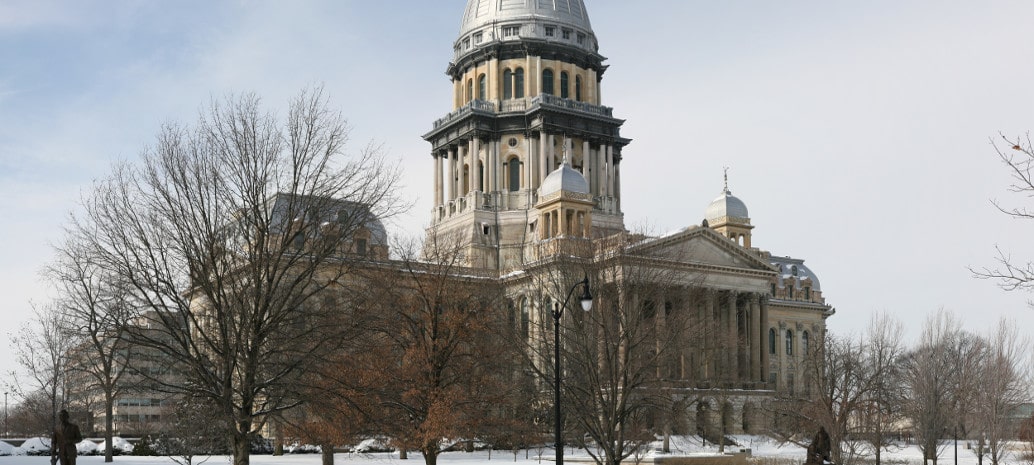Another pothole has appeared in the road to comprehensive energy legislation in the Land of Lincoln, as the Illinois Clean Jobs Coalition (ICJC) and Climate Jobs Illinois (CJI), two politically powerful groups representing environmental and organized labor interests, respectively, have informed the state’s General Assembly and Gov. J.B. Pritzker that they have failed to reach compromise on a clean energy bill.
Because the two parties could not come to an agreement, it is now time for Pritzker and the state legislature to take the lead.

In independent but similar letters, the two groups outline that the impasse is centered around what to do with a trio of Nuclear power plants, two of which are expected to be shut down before the end of the year, that are deemed necessary short-term measures to getting Illinois on track to meet it’s climate, clean energy, and employment goals. There are also concerns regarding what generation that would replace the two nuclear plants if they closed, centered around coal and natural gas plant retirement dates.
The environmental groups, expectedly, want to see the coal and gas plants shut down as quickly as possible, with significant pollution-reduction measures to be performed on existing and upcoming plants until those retirement dates are reached. Under a previous compromise, the two groups agreed for broad retirement dates of 2035 for coal plants and 2045 for gas plants, with interim targets, and an extension until 2045 for two specific coal plants, so long as those plants achieve 90% carbon-capture by 2035.
The union representation wants to make sure that the workers that they represent are not left jobless and without future opportunity. The group’s letter recognizes the threat of climate change, and the massive employment potential that expanded commitment to renewables presents, but has concerns over jobs lost in the immediacy of closures. The letter also accuses ICJC of failing to negotiate in good faith.
As the issue is currently framed, shutdown of the two nuclear plants is an outcome that would make both sides unhappy, as thousands of jobs would be lost following plant closures and the capacity taken off the grid would likely be replaced by majority fossil fuel generation.
.png)
In a response letter to CJI, Pritzker slammed the union representatives, accusing CJI of shifting the goalposts throughout the negotiations and failing to negotiate in good faith. Pritzker referenced an allegation made in the ICJC letter, that CJI’s proposed compromise bill “would allow dirty power plants to stay open in perpetuity, threatening the health and wellbeing of the very communities that Climate Jobs Illinois’ letter states that it wants to protect.”
What’s more, a generally agreed upon framework is already in place that would keep the three nuclear plants open. An agreement was reached in the spring to divide a $700 million surcharge across all ratepayer bills to fund the plants for five years, which has been estimated to increase the average consumer bill by 80 cents monthly. This could be complicated upon the passage of a federal infrastructure bill, which would include support for nuclear plants, but is poised for success at the moment.
What does this mean for solar?
All delays in reaching comprehensive energy legislation in Illinois have a real-time adverse effect on the state’s solar industry, which has run out of incentive funding and has essentially stagnated. Once the funding ran out at the end of 2020, businesses could no longer take on new projects and, as a result, the state’s solar industry has lost roughly 3,500 jobs to date, according to the Solar Energy industries Association. This incentive-related employment loss was essentially piling on the tens of thousands of solar jobs that were lost nationally in 2020, due to the Covid-19 pandemic.
Prior to that point, Illinois had been experiencing a solar development boom that had put the state on track to meet its 2008 RPS goal of requiring utilities to source 25% of their electricity from renewables by 2025. With seven months of job loss and stagnation in development, progress towards that figure is dangling just out of reach.
This content is protected by copyright and may not be reused. If you want to cooperate with us and would like to reuse some of our content, please contact: editors@pv-magazine.com.









By submitting this form you agree to pv magazine using your data for the purposes of publishing your comment.
Your personal data will only be disclosed or otherwise transmitted to third parties for the purposes of spam filtering or if this is necessary for technical maintenance of the website. Any other transfer to third parties will not take place unless this is justified on the basis of applicable data protection regulations or if pv magazine is legally obliged to do so.
You may revoke this consent at any time with effect for the future, in which case your personal data will be deleted immediately. Otherwise, your data will be deleted if pv magazine has processed your request or the purpose of data storage is fulfilled.
Further information on data privacy can be found in our Data Protection Policy.